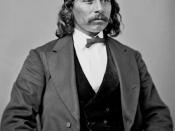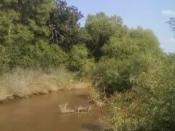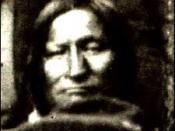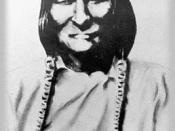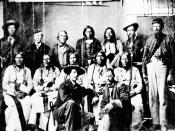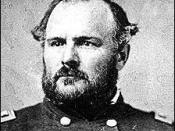On November 29, 1864, a cavalry brutally attacked a camp of Indians. These Arapaho and Cheyenne Indians were nearly harmless considering most of the people killed were women and children. They did not deserve to be brutalized and attacked without warning.
The Cavalry attacked and many people ran as they were in their homes when the event started. Most men stayed and fought with arrows, and a few with guns, therefore they did not do much damage considering the enemy was using all guns. The soldiers that attacked were under the command of Colonel John Chivington (Perrigo). They could hardly be considered human after they killed many women and children along with the men.
After a while of fighting, they stopped and retreated. The soldiers had killed about one hundred and fifty Indians. Women and children accounted for about seventy five percent of that toll (Bent). There should not have been any deaths because when the soldiers were advancing towards the village, the chief, Black Kettle, had raised a flag to show that they were friendly and wanted no confrontations (Bent).
The soldiers ignored this sign and started to fire on them. As many of the Indians ran along the creek, they found bodies of their companions who the soldiers had already killed (Bent).
While Chivington's men retreated, they stopped to scalp and mutilate any Indian corpses that had not been touched yet (Powell). The morning after the battle, the hatred continued when the soldiers found a young boy who had been buried by bodies, but was still alive. They took him out of the pile and blew his head off (Powell). It is obvious that the cavalry had the advantage when you look at the death tolls. The Indians lost between four hundred and five hundred men, while the soldiers only lost nine (Perrigo). They even killed a few Indian chiefs, including Black Kettle.
It is obvious that there was really no reason to attack the Indians at Sand Creek so harshly. They should have stopped when the flag was raised showing that the Indians did not have any problems with them. They just wanted to be left alone.
WORKS CITED:
Bent, George. Forty Years with the Cheyennes. 1905.
Perrigo, Lynn I. E. Major Hal Sayr's Diary of the Sand Creek Campaign. 1938.
Powell, Father Peter John. People of the Sacred Mountain. 1917.
